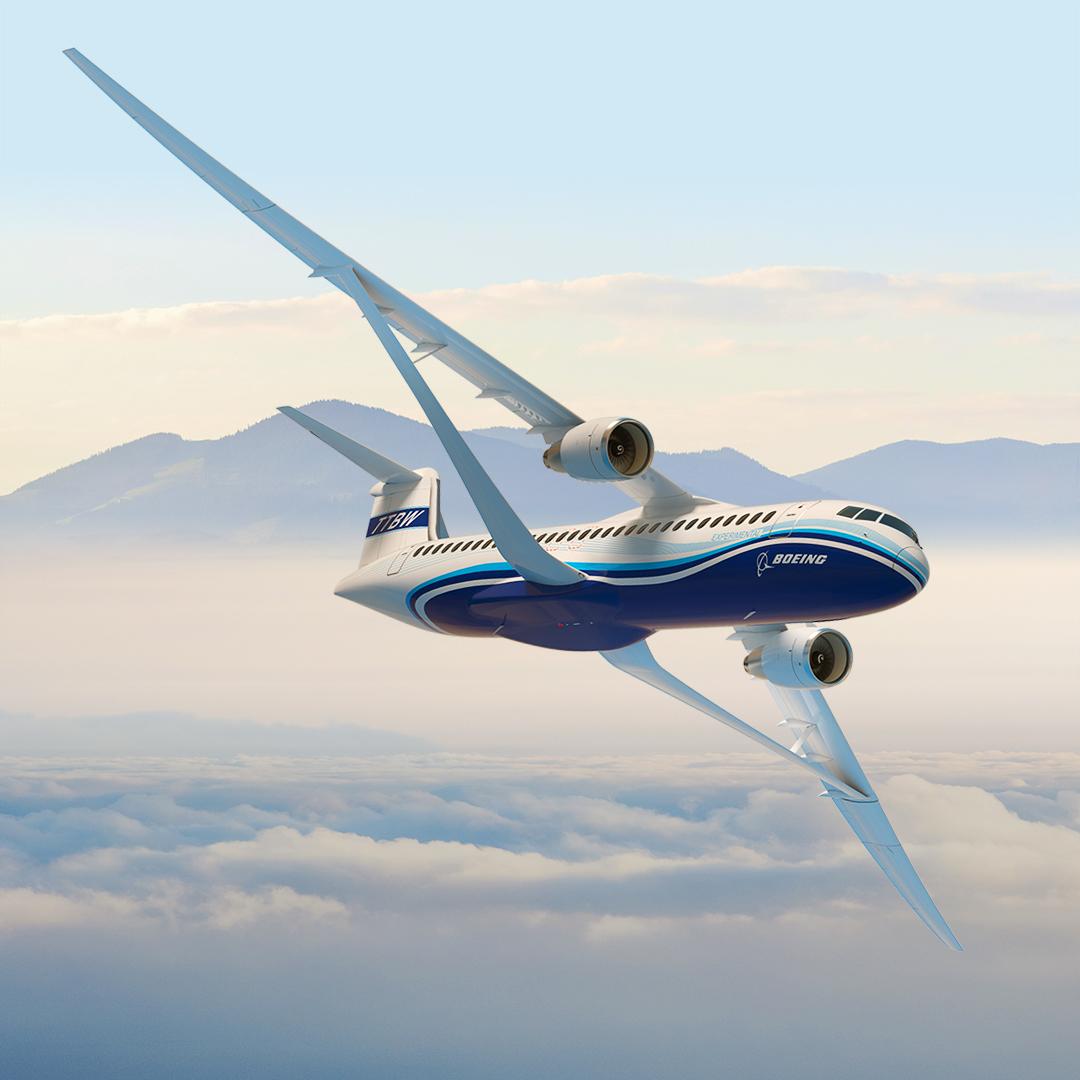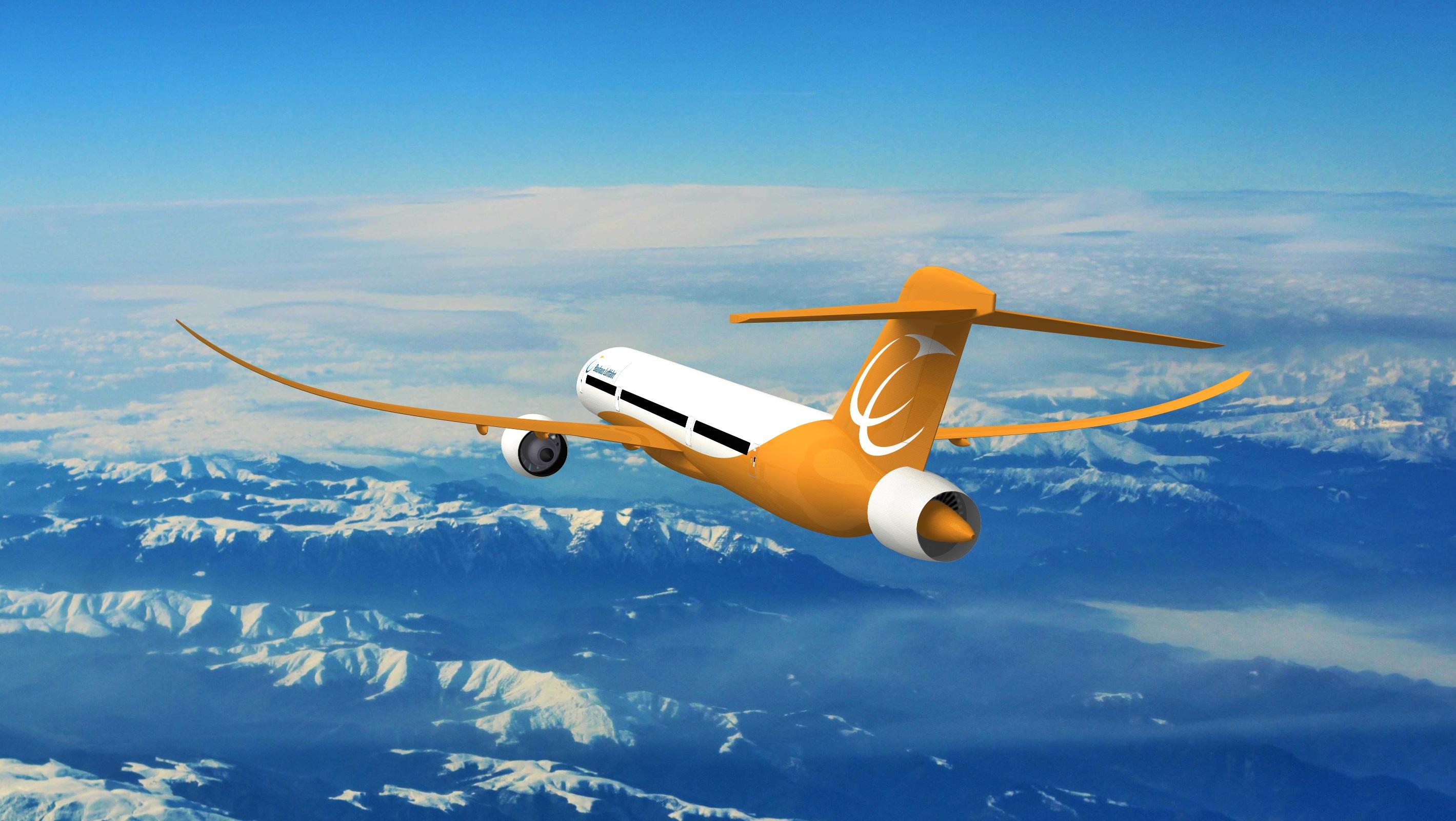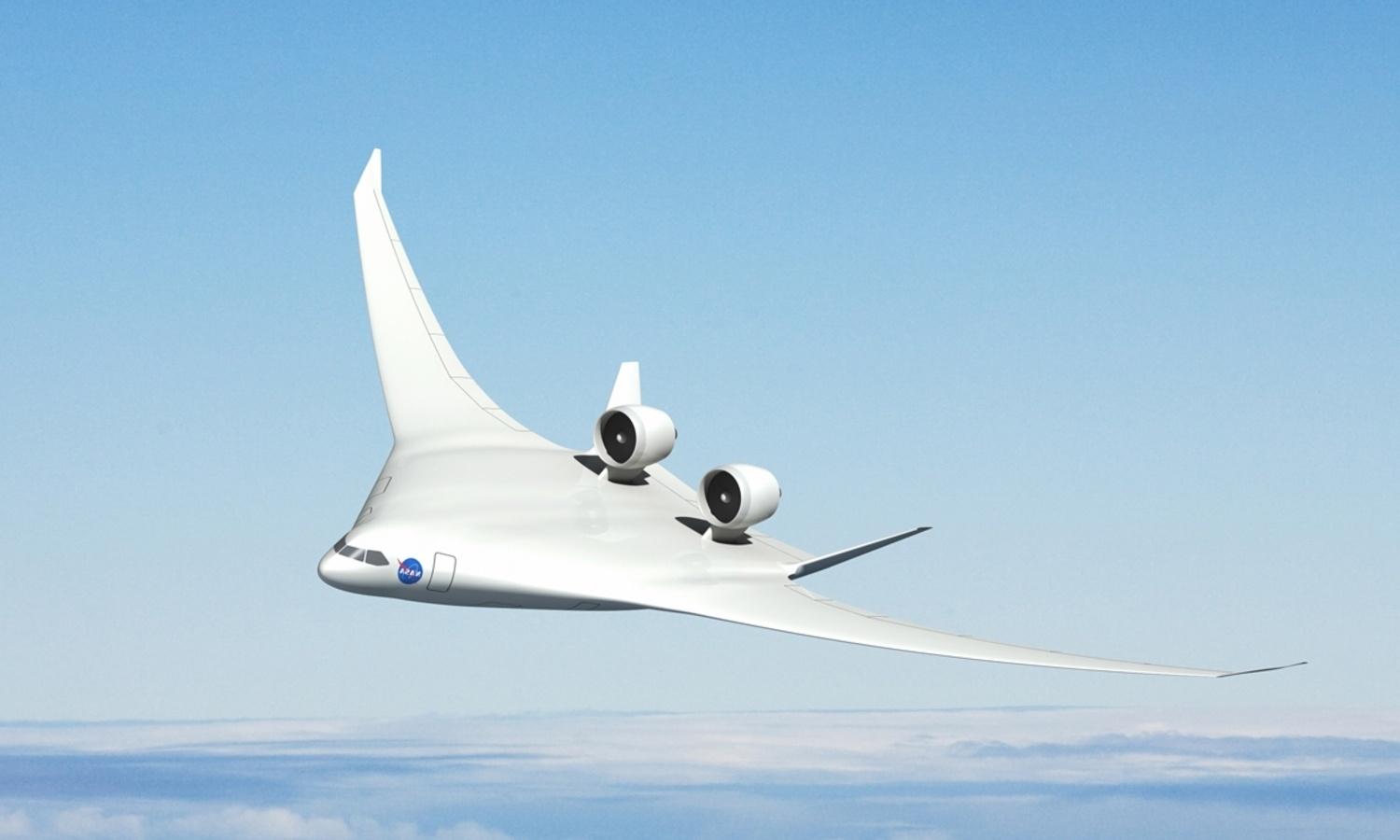
Aurora Flight Sciences D8
Conceived by Massachusetts Institute of Technology (MIT) and Aurora Flight Sciences, the D8 concept has two key technologies: a “double-bubble” fuselage and boundary-layer-ingestion (BLI) propulsion. The wide, lifting fuselage allows a smaller, lower-drag wing and tail, while the dual-lobe cabin cross-section provides twin-aisle convenience in a Boeing 737-800-class aircraft. But the non-circular fuselage cross-section requires a unique composite structure. The engines are embedded in the top of the aft fuselage where they ingest the boundary layer and reenergize the wake to reduce drag. But wake-filling propulsion requires distortion-tolerant fans to cope with the turbulent air entering the engines. Another distinctive feature of the D8 is the “pi” tail, which reduces weight.

Boeing Transonic Truss-Braced Wing (TTBW)
The TTBW has a high-aspect-ratio wing for low drag, supported by a strut or truss to minimize the structural weight of the long, thin wing. The aircraft has a span of 170 ft., compared with 118 ft. for a similar-capacity 737-800. This requires the wing to fold on the ground, outboard of the struts, to fit the same airport gates. The latest version of the TTBW has increased wing sweep to cruise at the higher speed, Mach 0.8, typical of today’s jet airliners. Boeing has studied versions of the TTBW with hybrid-electric propulsion and a BLI tail thruster.

Onera Dragon
Under Europe’s Clean Sky 2 aeronautics research program, three teams are studying radical configurations for future Airbus A320-class short/medium-haul airliners. France’s Onera has developed the Dragon concept. This features distributed hybrid-electric propulsion. Two turbogenerators mounted on the rear fuselage power an array of 40 electric ducted fans installed along the span of the wing. The fans are mounted under the trailing edge to avoid interfering with flow over the wing and increasing transonic drag. Blowing the fan exhaust over small wing trailing-edge flaps provides high lift for takeoff and landing.

Onera Nova
Inspired by MIT’s D8 configuration, French aerospace research center Onera developed the Nova concept with a similar wide lifting fuselage and BLI propulsion. In Nova, the engines are embedded inside the rear fuselage, with inlets on the sides rather than the top, where they ingest 40% of the fuselage boundary layer. The Nova also has a more conventional T tail.

Bauhaus Luftfhart Propulsive Fuselage
Similar to NASA’s STARC-ABL, Bauhaus Luftfhart’s Propulsive Fuselage concept mounts a BLI thruster in the tail, with an annular inlet to ingest the fuselage boundary layer. Developed under Europe’s Disbursal research project, the original concept has a third turbine engine in the tail powering the BLI thruster. Under the follow-on Centreline project, Bauhaus is leading design of a turbo-electric version with an electrically driven fan in the tail powered by generators on the downsized underwing turbofans.

Airbus Nautilius
Starting with the Nova, Airbus and Onera evolved the Nautilius concept to maximize ingestion of the fuselage boundary layer while minimizing azimuthal distortion of flow into the fans. The fuselage narrows to two stings at the tail, onto which the fans and nacelles are mounted. Driven by gas turbines or electric motors installed upstream of these propulsors, the fans ingest 100% of the fuselage boundary layer with minimum distortion, maximizing the drag saving.

Boeing Blended Wing Body (BWB)
The long-studied Blended Wing Body is a Boeing design for a large, long-range transport aircraft. Tailless flying wings are much more aerodynamically and structurally efficient than conventional tube-and-wing designs, but pose challenges. The non-circular pressurized fuselage is heavy compared with a conventional circular cabin. But Boeing has demonstrated a stitched, rod-reinforced carbon-fiber structural concept, Preseus, that significantly reduces the weight and increases the durability of the flat-sided wing box (which is the pressurized fuselage in a BWB). Engines are mounted on top of the rear of the aircraft, forward of the trailing edge, which shields both fan and jet noise and makes the BWB one of the quietest configurations.

ESAero ECO-150R
The ECO-150 began as a single-aisle concept using superconducting turbo-electric distributed propulsion, and evolved into a design using conventional electric machines. Two turbogenerators mounted mid-span power an array of electric fans installed inside an inboard “split” wing. The inlet ducts, fans and nozzles are sandwiched between upper and lower airfoils, which results in greater structural efficiency and a lighter wing. Using small trailing-edge flaps to vector fan thrust would provide propulsive lift for shorter takeoffs and landings.

NASA STARC-ABL
STARC-ABL is a concept for a single-aisle airliner with a BLI thruster in the tail. The original design is turbo-electric, generators on the underwing turbofans powering an electric motor that drives a fan embedded in the tail. A second version now under study has a third turbine engine in the tail to drive the fan. The BLI fan both produces thrust and reduces drag, allowing the underwing engines to be smaller and thus saving fuel.

TU Delft Flying-V
The Flying-V is an unconventional configuration for an ultra-efficient Airbus A350-class long-haul aircraft. The concept was originally designed inside Airbus’ advanced projects office in Germany, but is now being pursued by the Delft University of Technology in the Netherlands with support from Dutch airline KLM. The design overcomes issues with flying-wing designs including the weight of the non-circular pressurized fuselage, lack of cabin windows and passenger emergency evacuation. The Flying-V has two A320-class single-aisle cabins aligned along the leading edges of the V-shaped wing, with fuel and cargo housed in the trailing edges. These cabins are circular in cross-section, minimizing weight, but are oval when viewed in the direction of the air flowing over the wing. This minimizes drag. Windows and exits are arrayed among the leading edges. The Flying-V has less surface area than an equivalent Blended Wing Body design, for lower friction drag. Mounting the engines above the V-wing trailing edge shields the noise, while elevons and rudders on the outboard wings and winglets provide flight control.

Wright Electric M-Star
Wright Electric is working with European low-cost carrier Easyjet to define and then develop a 180-seat electric airliner for short routes such as London-Paris. The design has an array of electric fans inside full-chord ducts mounted on top of the inboard wing, which is swept slightly forward while the conventional outboard wing is swept back. This gives the wing an M-shaped planform. More electric fans are installed in a row across the flat rear fuselage between the V tails, where they provide thrust as well as boundary layer ingestion to reduce drag.
The rising clamor over aviation's carbon emissions could add impetus to studies of unconventional aircraft configurations, and offer a step change in efficiency – beyond simple improvements in engine technology. Here are some of the novel concepts being considered. This article was originally published in 2019.
